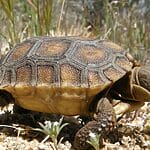11 Interesting Animals in the Sonoran Desert – You Might Not Know
The Sonoran Desert is a vast and ecologically diverse desert located primarily in Mexico. Encompassing an area of approximately 100,000 square miles (260,000 square kilometers), it is the hottest and most biologically diverse desert in North America.
The Sonoran Desert is known for its extreme temperatures, the Sonoran Desert experiences hot summers with daytime temperatures often exceeding 100°F (38°C). Winters are generally mild, with cooler temperatures at night.
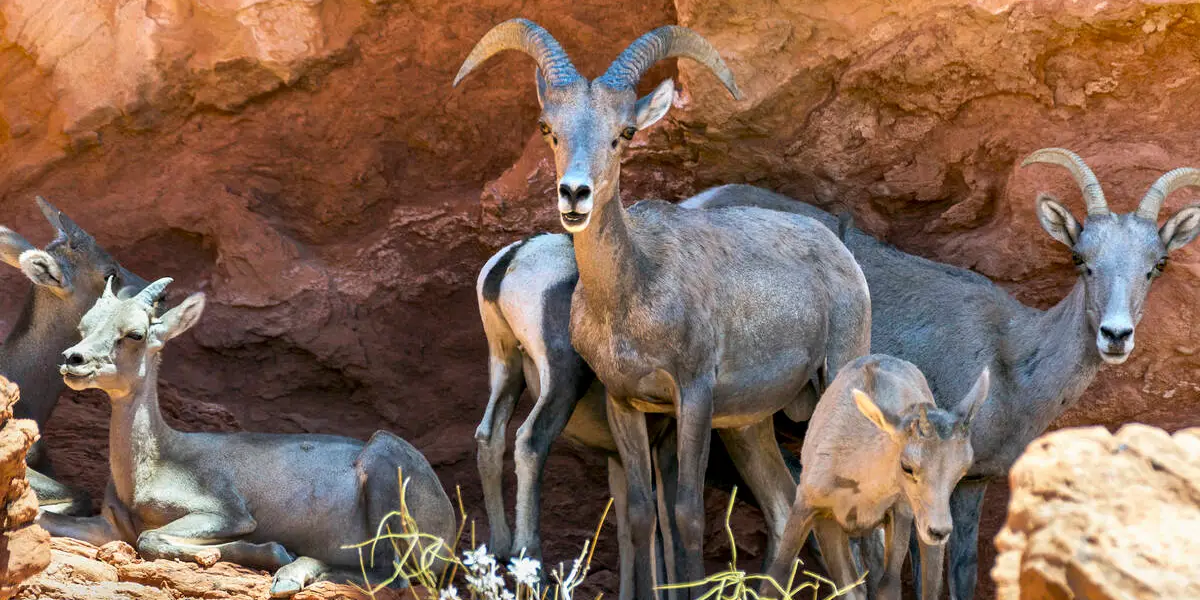
It has wondrous wildlife and a diverse range of interesting animals, the astonishing saguaro-laden landscape hosts the majestic desert bighorn sheep, renowned for its remarkable ability to traverse steep rocky terrain.
Moreover, the elusive and venomous Gila monster, one of only a few venomous lizards globally, adds intrigue to the desert’s fauna. The Sonoran Desert also provides a habitat for the agile and quick-witted coyotes, as well as the captivating and resilient desert tortoise, a species adapted to endure extreme temperatures.

The Sonoran Desert offers a diverse range of recreational activities for tourists. Hiking enthusiasts can explore the numerous trails, immersing themselves in the desert’s breathtaking scenery while discovering the resilient flora and fauna.
Bird watching is a popular activity, with the chance to spot diverse avian species, including the iconic Gila woodpecker and desert thrashers.
Do you know The Sonoran Desert extends into portions of California, Arizona, and southwestern Arizona in the United States, as well as the Mexican states of Sonora, Baja California, and Baja California Sur.
11 Interesting Animals in the Sonoran Desert – (With Interesting Pictures)
The wondrous wildlife thriving in the Sonoran desert ranges from the elusive kit fox to the crafty coyote. These interesting animals in the Sonoran Desert are captivating inhabitants that contribute to the rich biodiversity of the Sonoran Desert.
Additionally, from interesting rodents to large mammals, we have gathered 10 interesting animals in the Sonoran desert.
Saguaro National Park
Saguaro National Park is situated in the Sonoran Desert near Tucson, Arizona. Established in 1933, the park is divided into two districts – the Rincon Mountain District (east) and the Tucson Mountain District (west), collectively preserving over 90,000 acres of Sonoran Desert landscape.

The park’s namesake, the saguaro cactus, stands as a towering symbol of the American West. These majestic cacti, with their distinctive arms reaching for the sky, dominate the landscape and play a crucial role in the desert ecosystem.
Visitors to Saguaro National Park can explore a network of hiking trails that wind through the cactus forests, offering glimpses of diverse flora and fauna.
Arizona Sonora Desert Museum
The Arizona-Sonora Desert Museum, located just west of Tucson in the Sonoran Desert, is a renowned place that seamlessly combines a zoo, botanical garden, and natural history museum.
It was established in 1952, the museum spans 98 acres and is dedicated to showcasing the diverse flora and fauna of the Sonoran Desert region.

Visitors to the Arizona-Sonora Desert Museum are treated to a unique and immersive experience. The museum features a variety of interesting animals, where more than 230 animal species, including mammals, reptiles, amphibians, and birds, all displayed in naturalistic habitats.
Other interesting animals include mountain lions, javelinas, and a diverse array of desert reptiles that inhabit its varied landscape. The botanical gardens within the museum showcase an extensive collection of native plants, highlighting the remarkable adaptability of Sonoran Desert flora.
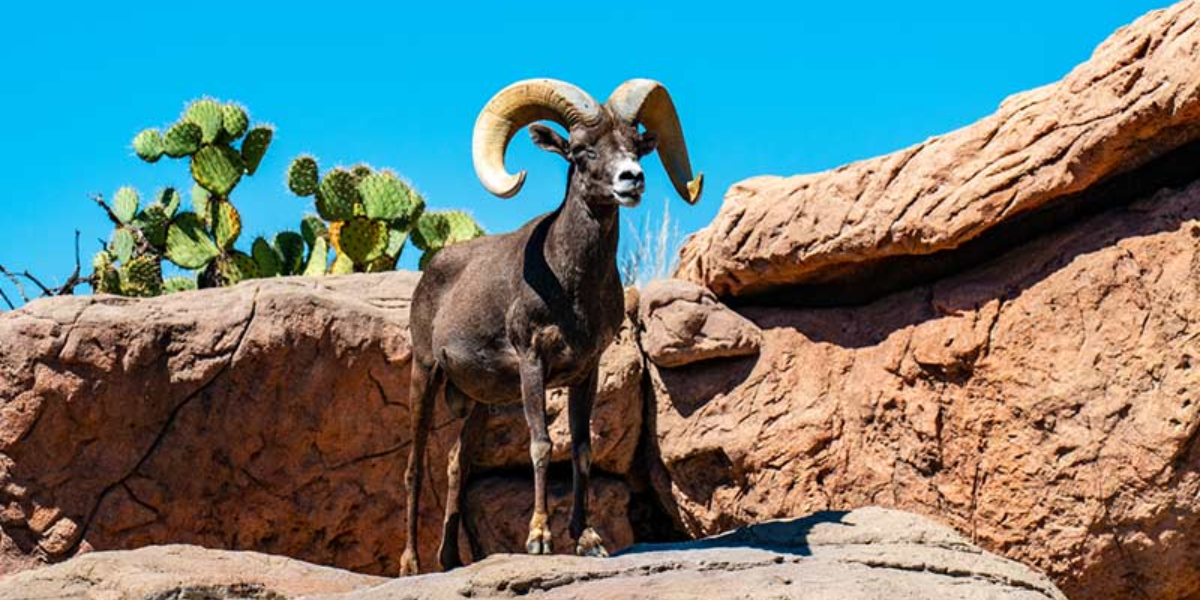
The Desert Museum is particularly known for its commitment to conservation and the cultivation of rare and endangered plant species. Additionally, the museum offers a range of indoor and outdoor displays, educational programs, and interactive exhibits. It provides visitors with insights into the desert’s ecology, geology, and cultural history.
Round-tailed Ground Squirrel (Xerospermophilus tereticaudus)
Round-tailed squirrel is a small, diurnal rodent native to arid regions of North America, particularly found in the southwestern United States and northwestern Mexico.
These agile squirrels thrive in diverse habitats which include desert scrublands, grasslands, and rocky areas, displaying remarkable adaptability to arid conditions.
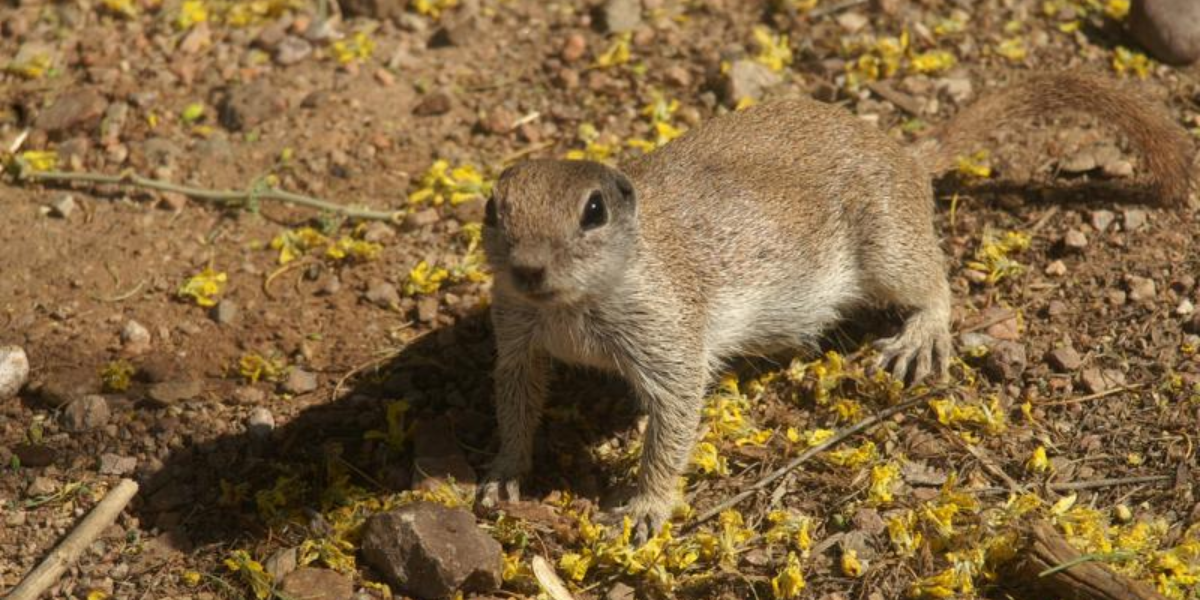
These interesting animals in the Sonoran desert can be recognized by their distinctive appearance. They feature a compact, rounded body, a bushy tail, and a sandy to pale brown fur coloration, providing effective camouflage in their arid surroundings.
Their diet primarily consists of seeds, fruits, and vegetation, contributing to their role as essential seed dispersers in their ecosystems. Fortunately, on the IUCN red list the ground squirrels are listed as “Least Concern,” which indicates their stable population.
However, their population is facing threats which include habitat loss due to urbanization and agriculture, as well as potential predation by snakes and birds of prey.
Bobcat (Lynx rufus)
The Bobcat is a highly adaptable and elusive wildcat native to North America. These wild cats found throughout the United States, Canada, and Mexico. These interesting animals in the Sonoran desert inhabit diverse environments ranging from forests and deserts to swamps and urban areas.

They have tufted ears, spotted coats, and short, stubby tails, and exhibit a robust and agile physique, ideally suited for stalking and ambushing prey. Their diet is diverse, encompassing small mammals, birds, and occasionally larger prey like deer.
Despite their adaptability, bobcats face threats to their population, including habitat loss, urbanization, and conflicts with humans, However, they are classified as “Least Concern,” on the IUCN red list of threatened species.
Gray Fox (Urocyon cinereoargenteus)
The Gray Fox is a highly adaptable and widespread canid species found in various habitats across North and Central America. This resilient fox thrives in diverse environments, including forests, grasslands, and deserts, displaying a remarkable ability to adapt to both rural and urban landscapes.
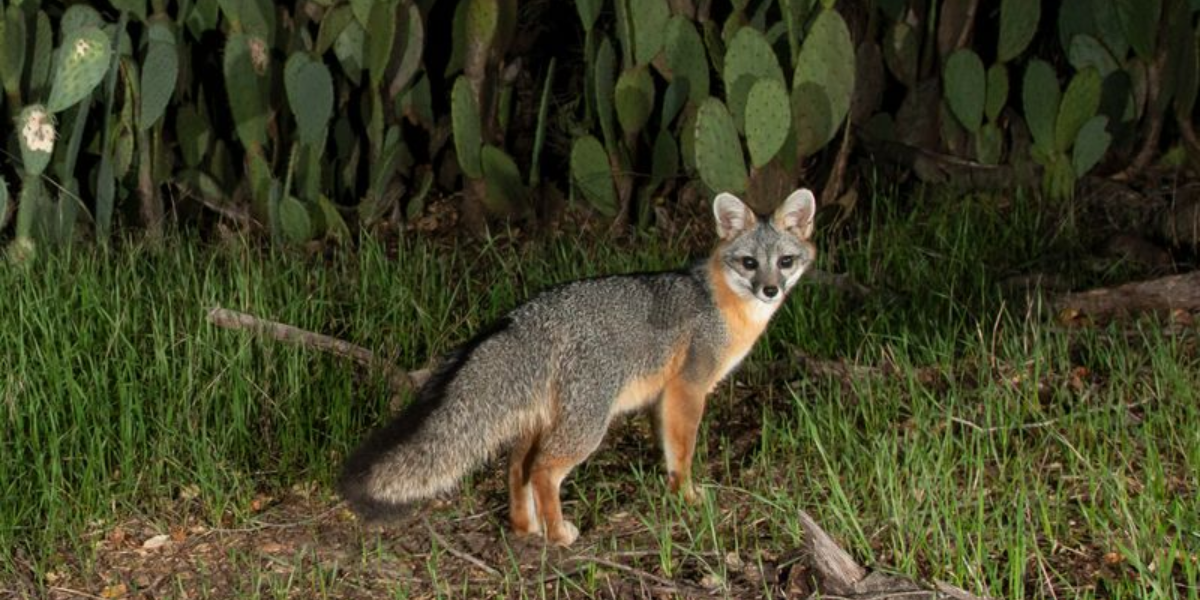
These foxes are one of the most interesting animals in the Sonoran desert and can be recognized by their distinctive appearance. The Gray Fox possesses a silvery gray coat, and a distinctive black stripe along its back, and a bushy black-tipped tail.
Unlike other canids, the Gray Fox has the unique ability to climb trees, utilizing this skill for shelter and hunting. Their omnivorous diet includes small mammals, birds, fruits, and insects, showcasing their opportunistic feeding behavior.
The IUCN Red List categorized the Gray Fox as a species of “Least Concern.” However, like many wild species, their population is also facing threats such as habitat loss due to urbanization, vehicular collisions, and diseases.
Coyote (Canis latrans)
The coyote is a highly adaptable and widely distributed canid species native to North America. Found throughout the United States, Mexico, and Canada, coyotes exhibit a remarkable ability to thrive in diverse habitats ranging from arid deserts to dense forests.
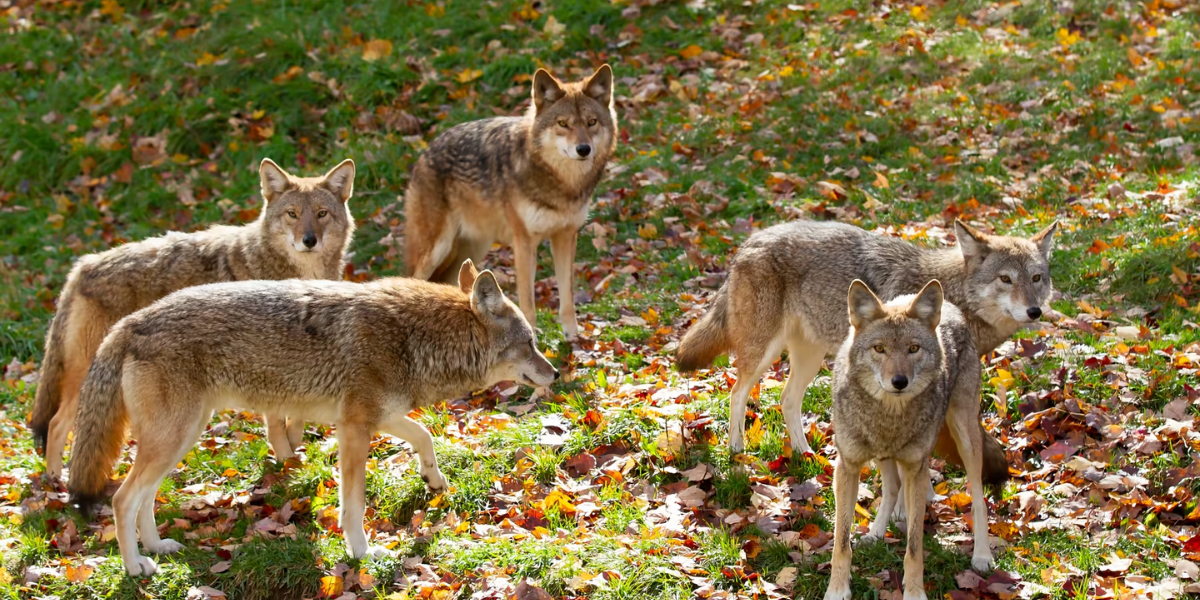
These interesting animals in the Sonoran desert resemble medium-sized dogs with a slender frame, erect ears, and a bushy tail. Their fur coloration varies, often blending with the surrounding environment, and may range from gray to reddish-brown.
Coyotes are opportunistic omnivores, displaying a diverse diet that includes small mammals, birds, fruits, and even carrion. Despite being resilient and versatile, coyotes face several threats to their population, including habitat loss due to urbanization, and vehicle collisions.
Currently, the International Union for Conservation of Nature (IUCN) listed the coyote as a species of “Least Concern.”
Mexican Wolf (Canis lupus baileyi)
The Mexican Wolf is a critically endangered subspecies of the gray wolf, primarily found in the southwestern United States and northern Mexico. These wolves historically roamed through diverse habitats such as grasslands, mountains, and scrublands, adapting to arid environments.
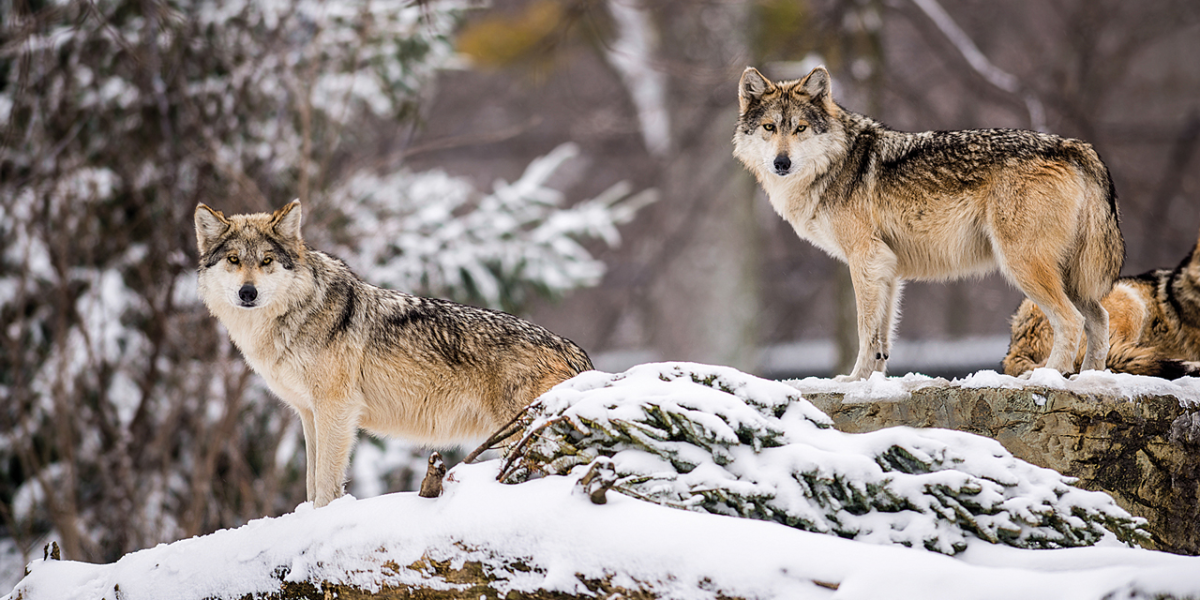
These interesting animals in the Sonoran desert can be recognized by their distinctive appearance. They are characterized by a slender physique, long legs, and a fur coat ranging from gray to reddish-brown with lighter underparts.
Their diet is carnivorous, consisting mainly of ungulates like deer and elk, along with smaller mammals. The Mexican Wolves population is facing severe threats, including habitat loss, illegal shootings, and conflicts with livestock.
According to the IUCN Red List, they are listed as “Critically Endangered,” and extensive conservation efforts, including reintroduction programs, aim to support their population.
Bighorn Sheep (Ovis canadensis)
The Bighorn Sheep is an iconic species inhabiting rugged mountainous regions across North America. These majestic creatures are primarily found in the United States, Canada, and parts of Mexico, thriving in diverse habitats ranging from alpine meadows to rocky slopes.

Bighorn Sheep are easily distinguished by their large, curved horns, which are present in both males and females but are more massive in males. Their tan to brown-colored fur provides effective camouflage in their rocky surroundings.
Bighorn Sheep are herbivores, grazing on a diet of grasses, shrubs, and other vegetation. The International Union for Conservation of Nature (IUCN) classified the Bighorn Sheep as “Least Concern.” The major threats to their population include habitat loss, disease transmission from domestic sheep, and human-induced disturbances
Roadrunner (Geococcyx)
The Roadrunner, a distinctive bird known for its swift running and distinctive appearance, primarily inhabits arid and desert regions of North and Central America.
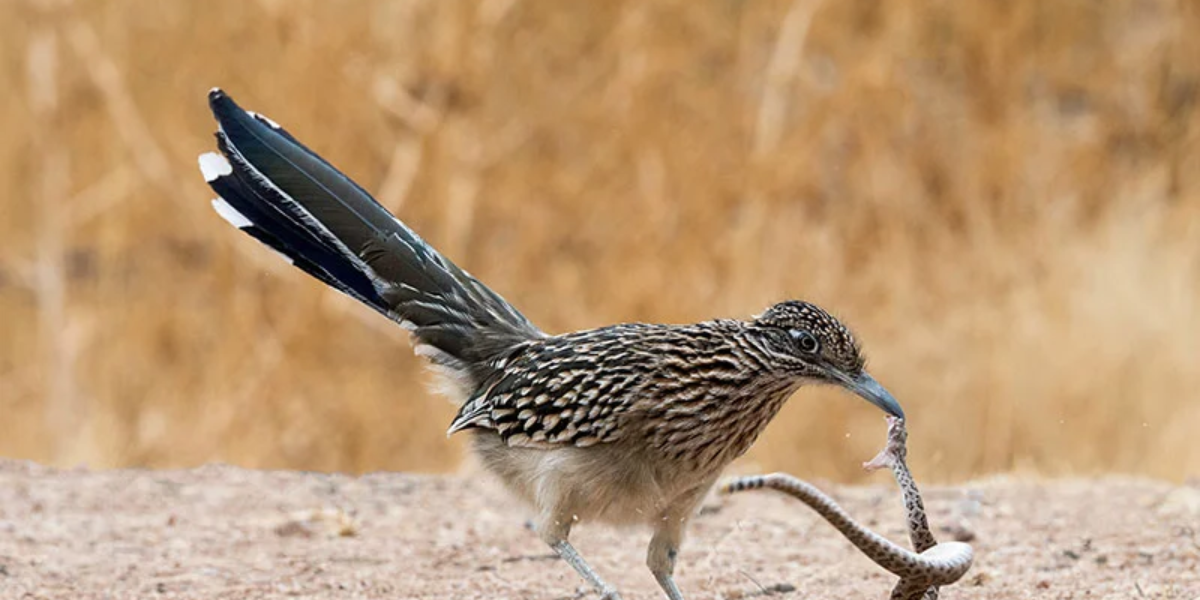
Found predominantly in the United States, particularly in the southwestern states like Arizona, Texas, and New Mexico, as well as extending into Mexico. They thrive in a variety of habitats ranging from scrublands to cactus-filled deserts.
These interesting animals in the Sonoran desert can be recognized by their gangly legs, mottled brown and white plumage, and distinctive crest atop their heads. Roadrunners are skilled runners and capable fliers.
Their diet includes insects, small mammals, reptiles, and even small birds. Moreover, the roadrunner is listed as “Least Concern,” on the IUCN Red List of Threatened Species.
Their population is facing threats from habitat loss due to urbanization, predation by domestic animals, and potential climate-related changes affecting its arid habitats.
Kangaroo Rat (Dipodomys)
The kangaroo rats have a gerbil-like appearance and a long tail with big hind feet, a large head, and small ears. These rats are sandy-colored with a white belly. They are unique animals belonging to the family Heteromyidae, small rodents known for their distinctive bipedal locomotion resembling that of a kangaroo.

These nocturnal creatures are primarily found in the arid regions of North America, particularly in the southwestern United States and parts of Mexico. Kangaroo Rats thrive in desert habitats characterized by sandy soils and sparse vegetation.
These rats can be recognized by their large hind legs, elongated tails, and prominent cheek pouches. They are adapted for efficient foraging and water conservation. Their diet primarily consists of seeds, supplemented by occasional green vegetation.
Despite their resilience, Kangaroo Rats face challenges, including habitat degradation due to urbanization and agriculture, leading to a decline in their population. Moreover, on the IUCN red list of threatened species, they are listed as “Critically Endangered.”
Some Interesting Birds in the Sonoran Desert
The Sonoran Desert, known for its arid landscapes spanning parts of the southwestern United States and northwestern Mexico, hosts a variety of interesting and uniquely adapted bird species. Some of the interesting birds in the Sonoran desert are given below.
Great Horned Owl (Bubo)
The great-horned owl is a majestic bird of prey widely distributed throughout North and South America. This adaptable species is found in diverse habitats, ranging from dense forests and open woodlands to urban areas, making it one of the most geographically widespread owl species.
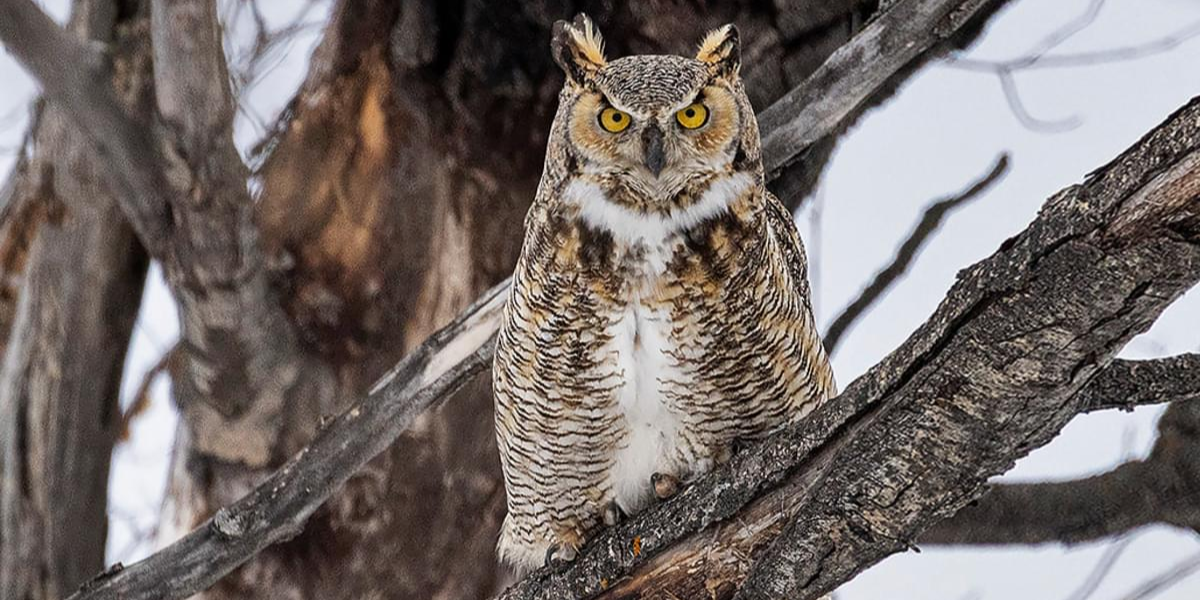
These owls can be recognized by their distinctive ear tufts or “horns,” the Great Horned Owl boasts a robust physique with a wingspan of up to 5 feet. Its plumage varies regionally, featuring mottled brown and grey feathers that provide excellent camouflage.
These nocturnal hunters are apex predators with a diverse diet, preying on mammals, birds, and even other raptors. On the IUCN red list of threatened species, these owls are listed as “Least Concern.”
Their population is facing threats such as habitat loss, environmental pollution, and collisions with vehicles.
Quail (Coturnix coturnix)
Quails, members of the family Phasianidae, are small ground-dwelling birds distributed worldwide, with various species found in North and South America, Europe, Asia, Africa, and Australia. These adaptable birds thrive in diverse habitats, including grasslands, woodlands, and agricultural areas.
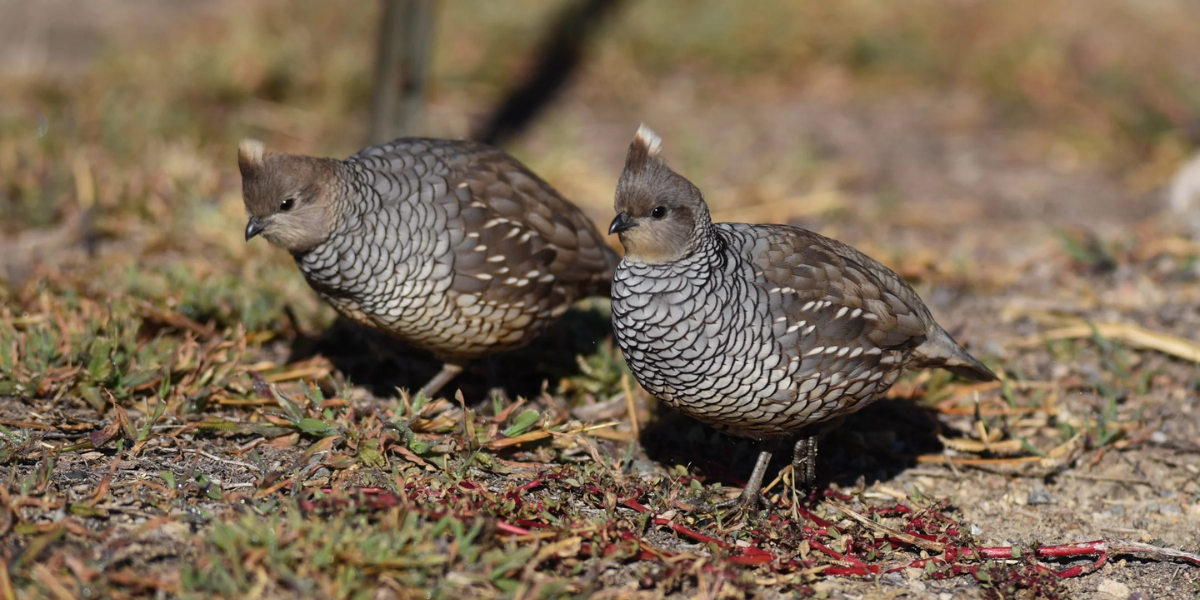
With a compact build, rounded wings, and short tails, quails exhibit subtle variations in coloration depending on the species, often featuring mottled patterns for effective camouflage.
Quails are omnivores, consuming a diet primarily consisting of seeds, grains, insects, and small invertebrates. On the IUCN red list of threatened species, these quails are listed as “Least Concern.”
Some major threats include habitat destruction due to agriculture, urbanization, and climate change, as well as hunting pressures, which pose challenges to quail populations.
Bat (Chiroptera)
Bats, belonging to the order Chiroptera, are a diverse group of flying mammals found across the globe, inhabiting a wide range of ecosystems from tropical rainforests to arid deserts. They are present in numerous countries worldwide, contributing to biodiversity and ecosystem health.
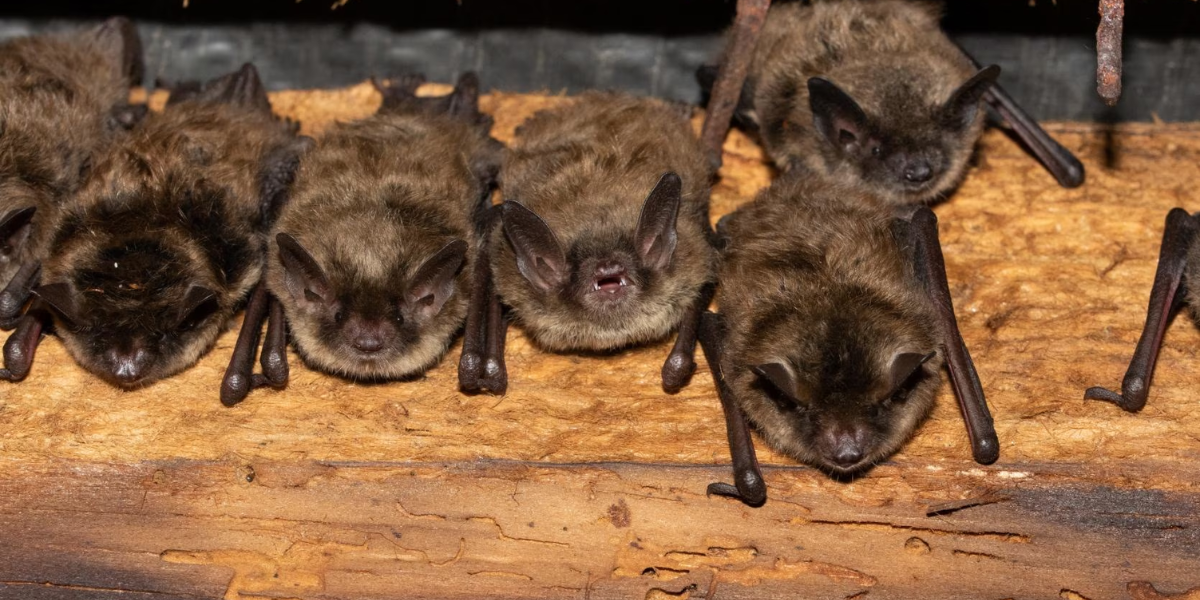
Bats exhibit diverse physiques and appearances, with wingspans ranging from a few inches to over five feet. Their unique adaptations for flight, including elongated fingers covered by a thin membrane, make them extraordinary nocturnal hunters.
Bats have a varied diet, primarily consisting of insects, fruits, nectar, and even small vertebrates in some species. Despite their ecological significance, many bat species face threats leading to their decline.
While the IUCN Red List status varies among species, some are classified as “Endangered” due to factors such as habitat loss, climate change, disease, and human activities like deforestation and pesticide use.
Frequently Asked Questions about Interesting Animals in the Sonoran Desert
What is the most common animal in the Sonoran Desert?
Jackrabbits and kangaroo rats are the most common animals in the Sonoran desert.
What is a unique animal in the desert?
Camel spider is a unique animal in the desert.
What is only found in the Sonoran Desert?
Saguaro cactus is only found in the Sonoran desert.
Which animal is rare in desert?
Sand Cat, Merriam’s Kangaroo Rat, and Tadpole Shrimp are rare animals in the desert.
- 12 Interesting Animals in Dominican Republic - 2024-05-02
- 8 Common Dangerous Animals in Yosemite - 2024-05-01
- 11 Interesting Animals in the Midwest - 2024-05-01


